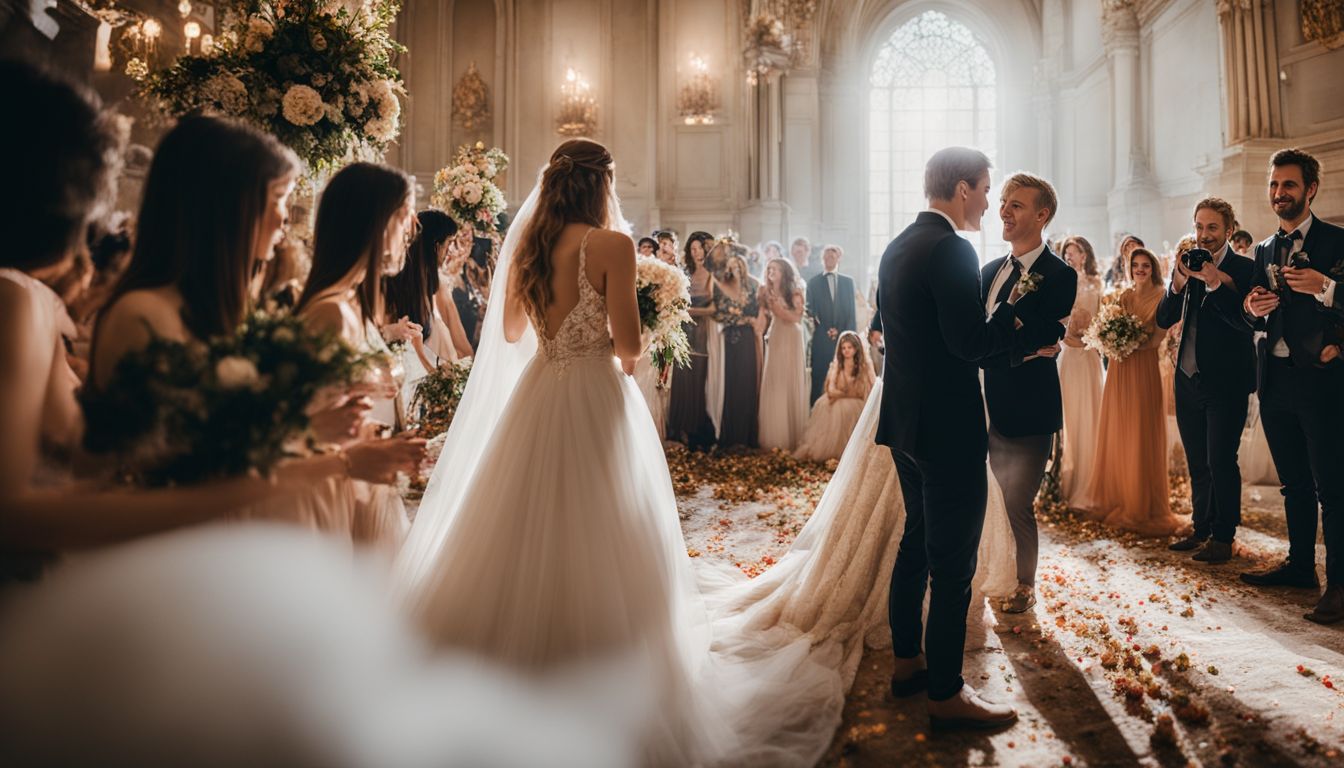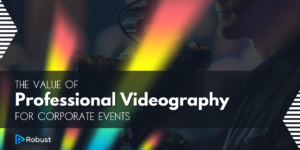Understanding the difference between photography and videography can be puzzling, especially when planning events or kicking off a creative project. Despite both being visual arts, photography freezes a single moment in time, while videography strings together multiple frames to craft motion pictures.
This article unfolds the various facets that set these two apart – from capturing stills to weaving narratives – ensuring you make an informed choice for your next artistic pursuit.
Dive in; clear distinctions await!
Key Takeaways
- Photography is about taking still pictures to capture a single moment, while videography records moving images to tell a story over time.
- Photographers use tools like cameras and tripods to shoot images, and might adjust light or shadows in editing. Videographers use equipment such as video cameras, microphones, and lighting kits; they also edit by adding music or special effects to make videos engaging.
- In events like weddings, videography can catch all the action and sounds, helping people feel like they are reliving the event when they watch the footage later on.
Understanding Photography

Photography captures life one click at a time. Photographers use their cameras to freeze moments, whether it’s a breathtaking sunset or the joy on someone’s face. They play with light and shadows to make pictures that can tell stories without moving images.
A good photo can make you feel things just by looking at it.
Professional photographers may work on their own, taking photographs for weddings or magazines. Some have studied art and design, learning how to see the world through a lens in new ways.
Their skill helps them find the perfect shot, even if they only have a second to take it. Each image they capture is like a piece of puzzle that shows how beautiful our world is.
Understanding Videography

Videography captures live action and tells a story. Think about your favourite movie or a wedding video. Videographers are like storytellers who use a camera to record events as they happen.
They keep the camera rolling to get all the important parts, not just one moment. This means their videos can show things changing over time.
Editing is key in videography too. After shooting, videographers go through what they filmed and put it together in a way that makes sense for people watching it. They might add music, cut out bits that aren’t needed, and make sure everything looks smooth.
It’s like putting together a puzzle to create something fun or touching to watch.
Videographers keep learning new ways to capture images so their videos look amazing and tell stories well. If you see cool videos on social media made by influencers or brands, there’s often a videographer behind them using these skills!
Key Differences Between Photography and Videography
Photography focuses on capturing single moments, while videography tells a complete story through moving images. To understand the key differences between these two art forms, let’s explore their unique approaches and techniques.
Read more to uncover the nuances that set photography and videography apart.
Capturing Moments vs. Telling Stories
Photography freezes a single moment in time. It’s about snapping that perfect shot when everything lines up just right – the light, the emotion, the surprise. One click can grab all of this and hold it still forever.
A great photo might even seem to tell a story without using any words at all.
Videography does something different. It weaves moments together to show us more than just an instant; it shows us what happens before and after too. Videos take us on journeys, letting us watch as stories unfold over time.
They connect one point of view to another until they create a whole tale that moves, speaks, and changes—just like real life does.
Equipment and Techniques
Photographers need cameras that can take sharp pictures. They also use lenses to zoom in or out. A tripod keeps the camera steady, and flash units help in dark places. For videography, people start with video cameras and may add microphones to get good sound.
Lighting kits make sure everything can be seen clearly.
Both hobbies require learning how to frame a shot well. Photographers learn about light and shadows, while videographers focus on smooth movements too. Editing skills are important for both but use different tools—photo editors tweak images, whereas video editing programmes put clips together into stories.
Post-Production Processes
After the camera stops rolling, post-production begins. Editors take over to shape raw footage or images into a polished final piece. They cut out mistakes and pick the best shots for photos or videos.
For movies or clips, they might add music, sound effects, and special effects to make everything look and sound great.
Post-production can be different for photos versus videos. Photographers fix colors and remove blemishes to make pictures perfect. Videographers often have more work as they line up audio with moving images and may weave together different storylines.
Both use digital tools to deliver eye-catching results that tell memorable stories or capture stunning scenes.
The Role of Videography in Special Events (e. g. , Wedding Videography)
Videography plays a huge part in special events like weddings. It grabs the live action and sounds to share a story. This helps people feel they are there again when they watch it later.
Wedding videos capture vows, laughs, dances and all the small bits that make the day unique. They let friends who could not come feel like they did not miss out.
A good videographer will think about light, sound, and where to stand for the best shots. They work hard to get high-quality footage without being in the way. These pros make sure every laugh and tear is caught on video.
With their help, couples can relive their perfect day whenever they want to.
Conclusion
Alright, let’s wrap this up! Photography gives us stunning still images to cherish. Videography brings these moments to life with movement and time. Each has its own tricks and tools, and both create magic in their ways.
Whether freezing a smile or weaving a story, they capture our world—one frame at a time, one scene after another. They are different art forms that keep memories alive for us all.
If you’re keen to delve deeper into how videography brings special occasions to life, explore our comprehensive guide on what a wedding videographer does.
FAQs
1. What exactly is photography?
Photography is the art of capturing still images—those single, frozen moments in time. It’s a creative process that might require a simple camera or sophisticated digital imaging techniques. Mastering this skill often begins with studying at places like Full Sail University or other fine arts and liberal arts schools.
2. Then, what’s videography all about?
Videography, on the other hand, is all about recording moving images—it’s essentially creating films or videos. Whether it’s sports events or personal stories, videographers use cameras to tell dynamic visual tales over time.
3. Are there special schools for learning photography and videography?
Certainly! There are several degree programmes across America—from New Mexico to Missouri—that teach these crafts. Institutions such as Rochester Institute of Technology offer undergraduate courses, while others may have postgraduate options for further study.
4. Can I get professional recognition in photography or videography?
Yes indeed! Whether you’re completing an associate’s degree or aiming for a master’s degree, many programmes from engineering to state universities include certificate programmes that help sharpen your skills and prove your expertise to any target audience.
5. Do newspapers need photographers or videographers more these days?
Newspapers nowadays tend to look for professionals who can handle both stills and video content due to the rise of digital media—they value versatility!
6. Is it possible for one person to be good at both photography and videography?
Absolutely—with passion, practice, and perhaps a bachelor’s degree in the field from a place like the University of Cincinnati, you can excel in capturing stunning stills as well as crafting compelling video narratives.






